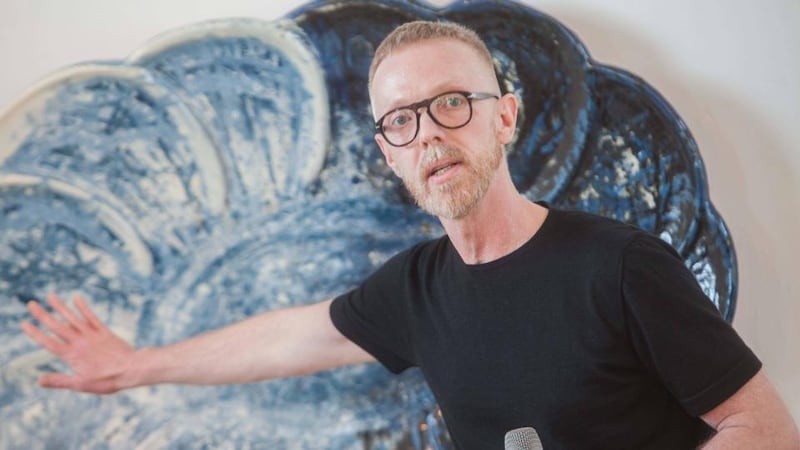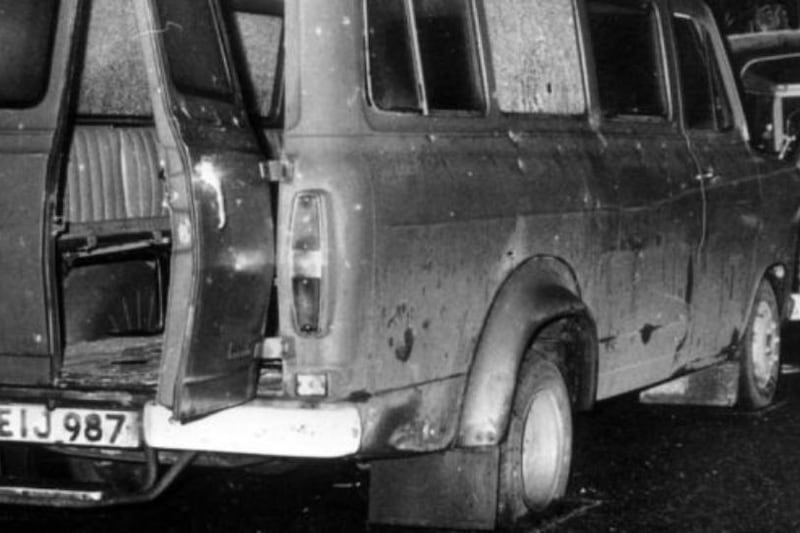A peripheral area of Europe with a small population, the Nordic region has nonetheless given the world its design for life. From furniture to phones, the look and feel of our everyday experience is stamped by the creative culture of the territory, yielding a stylistic template both distinctive and ubiquitous. It is an achievement that has long inspired but eluded Ireland, a similarly fringe territory yet to produce brands such as Ikea or Nokia, enterprises whose worldwide success is rooted in a homegrown legacy of craft and design.
That, at least, is how the remarkable design culture of Scandinavia is viewed by most of us: clean lines and cool minimalism, funnelled through flatpack furniture, mobile keypads and singularly recognisable cars. But as shown by The Nordic Effect , a new double-handed exhibition at the National Craft Gallery in Kilkenny, the reality is far more diverse, diffuse and unpredictable than the serenely fashionable stereotype of international imagination.
One only has to compare Paradigm, an exhibition of contemporary craft from Norway, with Views On Clay , its adjoining showcase of current Finnish designers, to see the disparities that exist within the region, with traditions and approaches diverging widely from country to country. But if the shows challenge the accepted image of the Nordic countries as a giant factory floor of trendily spectacled interior designers, they also highlight the historical importance and continuing vibrancy of design and craft in life there. And by showing in Kilkenny, the exhibitions serve to remind us of the immense impact these countries have had on Irish design and craft.


Of the two displays, Views On Clay conforms more to the accepted view of the region. Originally shown last year at the Design Museum in Helsinki, during the city's tenure as World Design Capital, the exhibition features the work of Finnish designers who were invited to use the medium of clay in any manner they wished. The finished artefacts by turns push the exhibitors' discipline of design and give free rein to their artistic vision, but all testify to Finland's storied design heritage.
Mika Kato-Karhu's porcelain measuring spoons and Camilla Kropp's ceramic vessels refer to the country's reputation for deftly formed furniture and fittings: even a more decorative piece such as Lux , Viktoria Petterson's multi-hued light shade work, is marked by clarity of form. And if Laura Pokela's clay urns are palpably handcrafted, their incongruous rubber and rope coils are rooted in a designer's remit to fuse disparate materials; likewise, Kirsti Taiviola's earthenware grain mill marries curved lines and rustic looks with functionality.
There are works with a more conceptual edge, such as Tanja Sipilä's experiments with "living forms of clay", which features large scale photographs by Liisa Valonen of an alabaster-splattered model. But otherwise the pieces are largely rooted in the ethos of the design profession, even if they are playful in mood and arresting in look.
Modern incarnation
This is hardly surprising. "Design has always been there in the everyday life of Finnish people," says Suvi Saloniemi, the show's co-curator. Finland has a design history that goes back to the craft industry of the 19th century, but its modern incarnation began in the post-war period, when the country struggled to rebuild itself following its defeat to the Soviet Union.
"Designers and architects were taken as a central part of this recovery and rebuilding era, so they really became an everyday part of life," says Saloniemi. As an example, she cites the stackable tableware of Kaj Franck, which was designed to fit into small apartments built in the 1950s. The country's reputation for eye-catching homewares was sealed by other practitioners such as Alvar Aalto and Eero Saarinen, the Finnish-American whose iconic tubular chairs populate the set of Mad Men .
The other show, Paradigm , has an altogether different emphasis, rooted in peculiarly Norwegian conditions: as Lars Sture, the exhibition's curator, points out, the country has always tended towards crafts rather than design. Historically colonised by its Scandinavian neighbours, lacking the industrial base of Sweden or Finland, Norway developed a craft tradition that stressed national characteristics and the practicalities of making, rather than the more conceptual visual bias of design. Paradigm draws on this past, featuring practitioners who seek to marry traditional techniques and materials with more innovative and artistic concepts.
Hence exhibits such as Ulla-Mari Brantenberg's exquisite glassworks, Tulla Elieson's monochromatic porcelain work
Scar,
and Linnéa and David Calder's angular, weighty brass pieces are more akin to visual art, no matter that they are the products of painstaking processes by their creators. Others, such as Pal Vigeland's glinting metal cylinder, recycles shards of old honey tins, suggesting a multitude of backstories and ideas, again akin to contemporary art. Such pieces mirror the shift toward more purely aesthetic concepts that occurred in Norway's crafts scene in the 1970s. Overall, the show conveys a bold vision far removed from the accepted public image, often encountered in Ireland, of the craft industry as a producer of handmade heritage goods or decorative pieces.
Two expositions
It is no coincidence that Kilkenny should host these two expositions of the Nordic gift for marrying distinctive looks with practical function. These were the qualities coveted by Córas Tráchtála, the Irish export board, when in 1961 it commissioned a report from six designers from Sweden, Denmark and Finland on the state of industrial design here.
The resulting document excoriated the moribund status quo at the time, unsurprising given that during the protectionist de Valera years, the emphasis had been on producing handcrafted goods such as pottery and textiles, which were ill-suited to the international market that would beckon with EEC membership. The report resulted in the foundation in 1963 of Kilkenny Design Workshops (KDW), an ambitious venture that would leave its stamp on Irish industry – and craft – over the next 25 years.
Yet the long-term results were ambivalent. The commitment to design was not sustained: KDW was allowed to go bust in 1988, after the State would no longer cover its losses. Anne Mulrooney, curator of the National Craft Gallery, also highlights the fact that Ireland has no dedicated design museum. Meanwhile, the craft world here is viewed through the prism of commerce rather than culture: the Crafts Council of Ireland is funded by Enterprise Ireland. It all suggests a rather reductive worldview, particularly when compared to Mulrooney's notion of craft as an "intelligence of the hand", or contrasted with the elan of the works seen in The Nordic Effect .
Perhaps it was always too much to expect the spectacular accomplishments of Scandinavia to be transplanted here. As Saloniemi points out, the Nordic countries have strong common characteristics that have contributed to their strong creative traditions, from a deeply egalitarian ethos to the resources and materials they use.
But just as the exhibitors in
The Nordic Effect
look forward as much as they hark back, so the omens for Ireland's future are optimistic. Dublin, after all, made the final shortlist to be 2014 World Design Capital, while the impressive attendance at the recent Offset festival is testament to the energy of Ireland's design sector. We may have taken our cue from Scandinavia in the past, but Irish practitioners now seem to possess confidence in their own abilities, with some justification. Perhaps it is best to enjoy
The Nordic Effect
like that great northern export of the moment, the television crime thriller: as an exhilarating glimpse into a distinctive culture, a show to be savoured rather than a model to be aped.
The Nordic Effect
is at the National Craft Gallery, Kilkenny, until May 17th



















